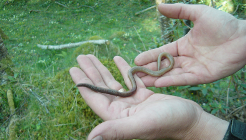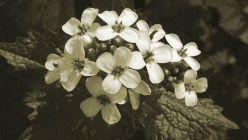
To efficiently manage and prevent species invasions, we need accurate predictions of where these species can arrive and persist. Species distribution models make such predictions…

Many species of carp are invasive in North America, accumulating large biomass, damaging benthic habitat, and disrupting native food webs. By contrast, the Grass Carp…

Above An example of Lumbricus terrestris, which is invasive in the United States The presence of non-native earthworms within the United States has long been…

Garlic mustard (Alliaria petiolata) in an invasive understory herb in forested areas of the Eastern United States. Two features make garlic mustard interesting from a…

Invasive species are a leading environmental problem in aquatic ecosystems and provide a challenging set of theoretical questions for population ecology. One question of interest…

There are many species of weeds, but how many basic kinds of weeds are there? Are weedy species more related to each other than to…

Background A partial differential equation model of population growth and dispersal developed by Lewis and Karieva (1993) predicts that invading populations subject to an…

Like many cladocera in temperate environments, the spiny water flea Bythotrephes longimanus exhibits cyclical parthenogenisis in which overwintering resting eggs are produced through sexual reproduction…





